Abstract
Serological methods are playing an increasingly important role in the diagnosis and epidemiological assessment of diseases. Simple, inexpensive methods for large-scale application are urgently needed. The enzyme immunoassay methods developed recently and reviewed here hold great promise for application in a wide variety of conditions. Under laboratory conditions they can be as sensitive as radio-immunoassay, but they can also be adapted as simple field screening procedures. These methods are based on the use of antibodies or antigens that are linked to an insoluble carrier surface. This is then used to “capture” the relevant antigen or antibody in the test solution and the complex is detected by means of an enzyme-labelled antibody or antigen. The degradation of the enzyme substrate, measured photometrically, is proportional to the concentration of the unknown “antibody” or “antigen” in the test solution. The application of these techniques to endocrinology, immunopathology, haematology, microbiology, and parasitology is reviewed.
Full text
PDF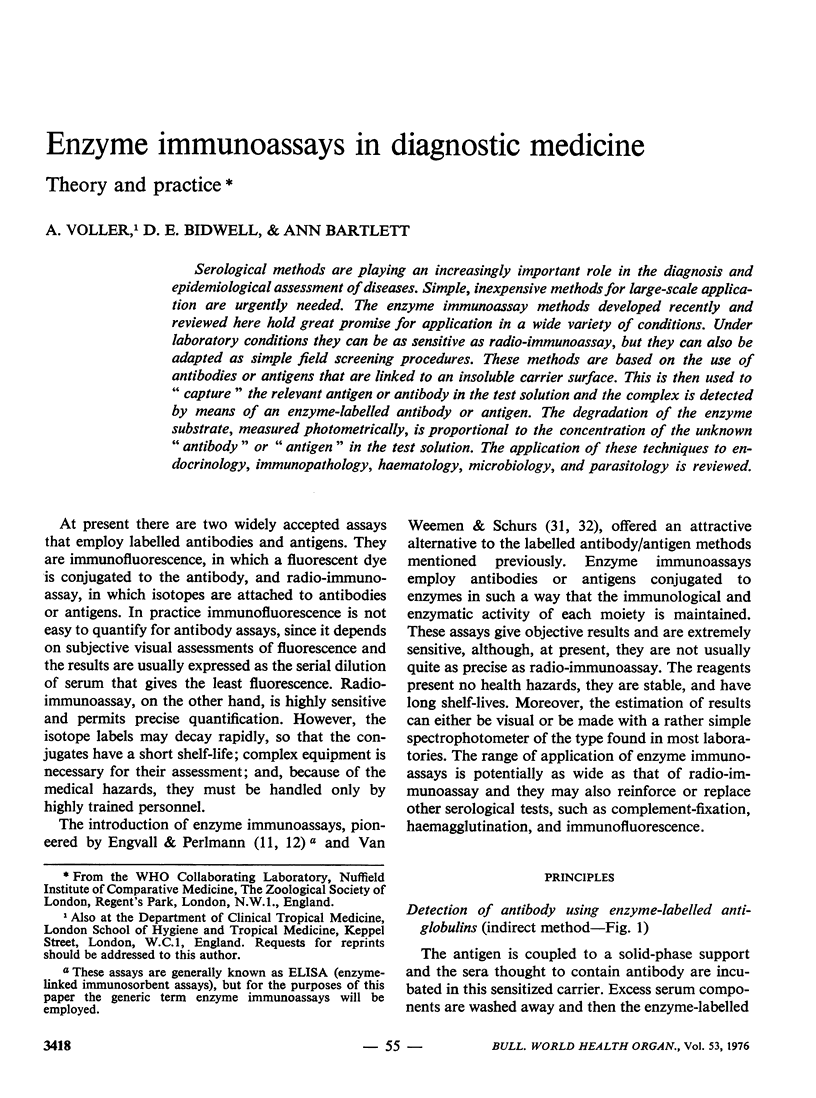
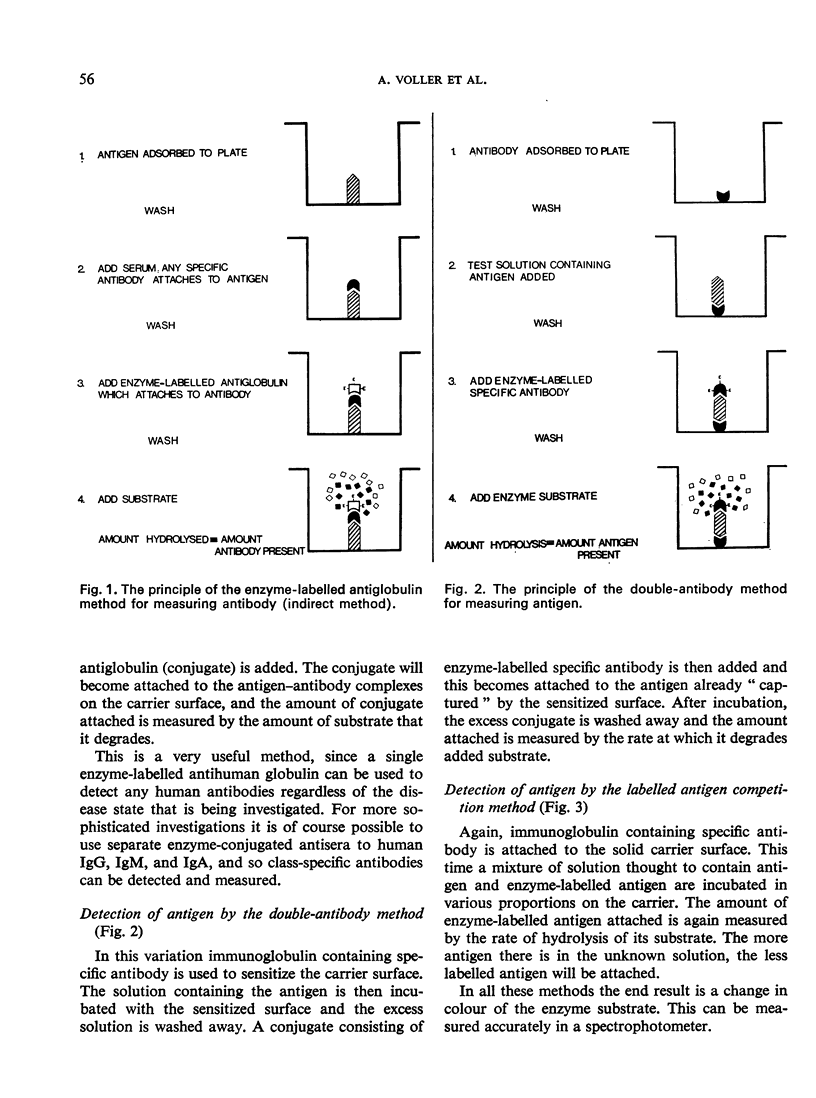
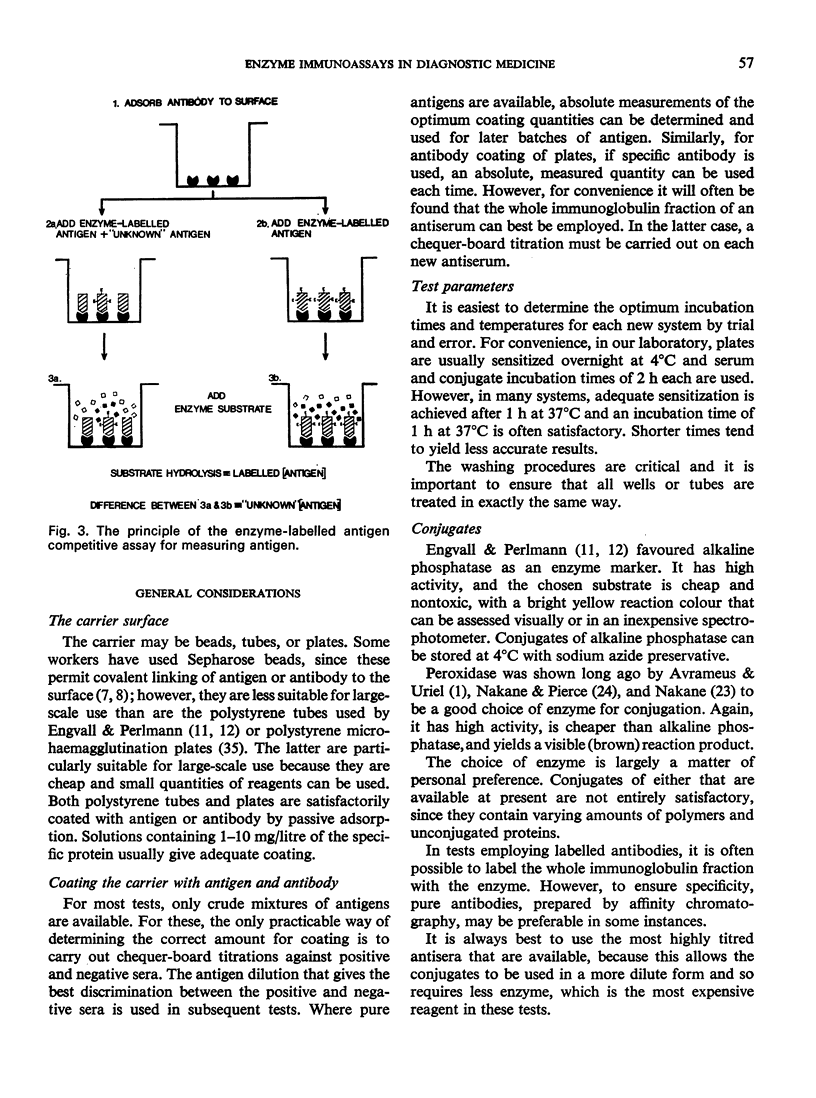
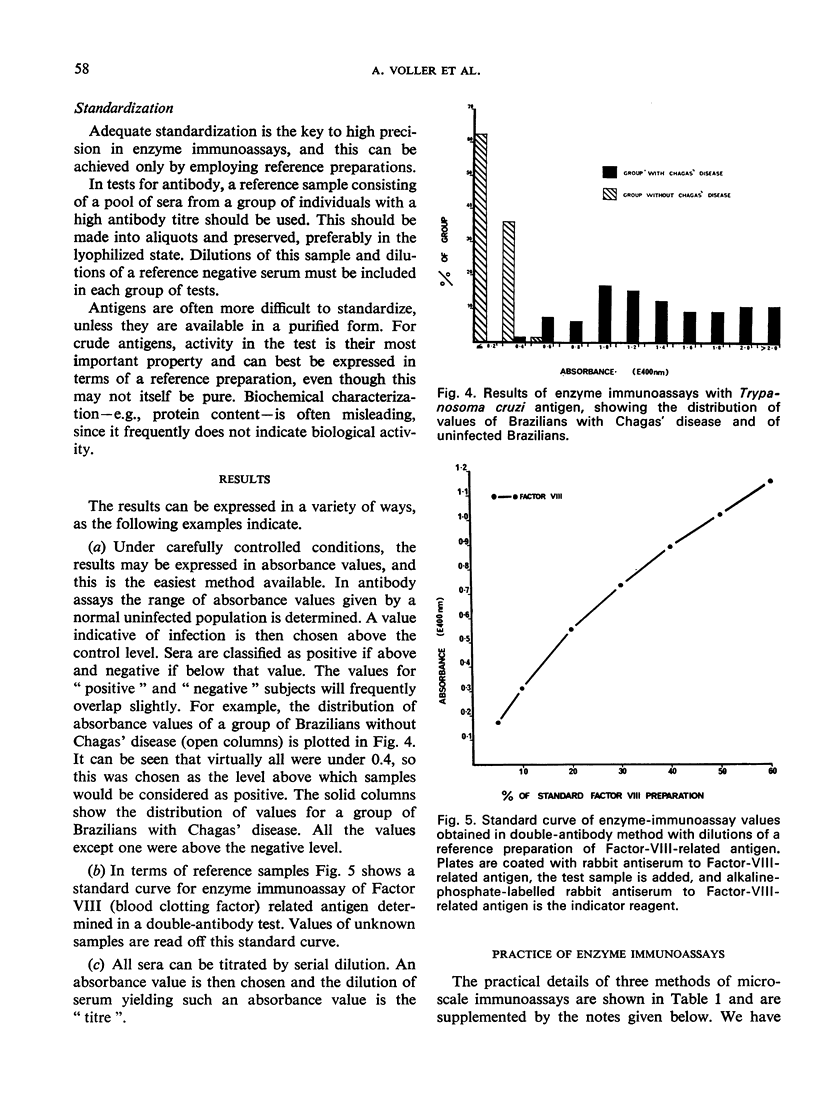
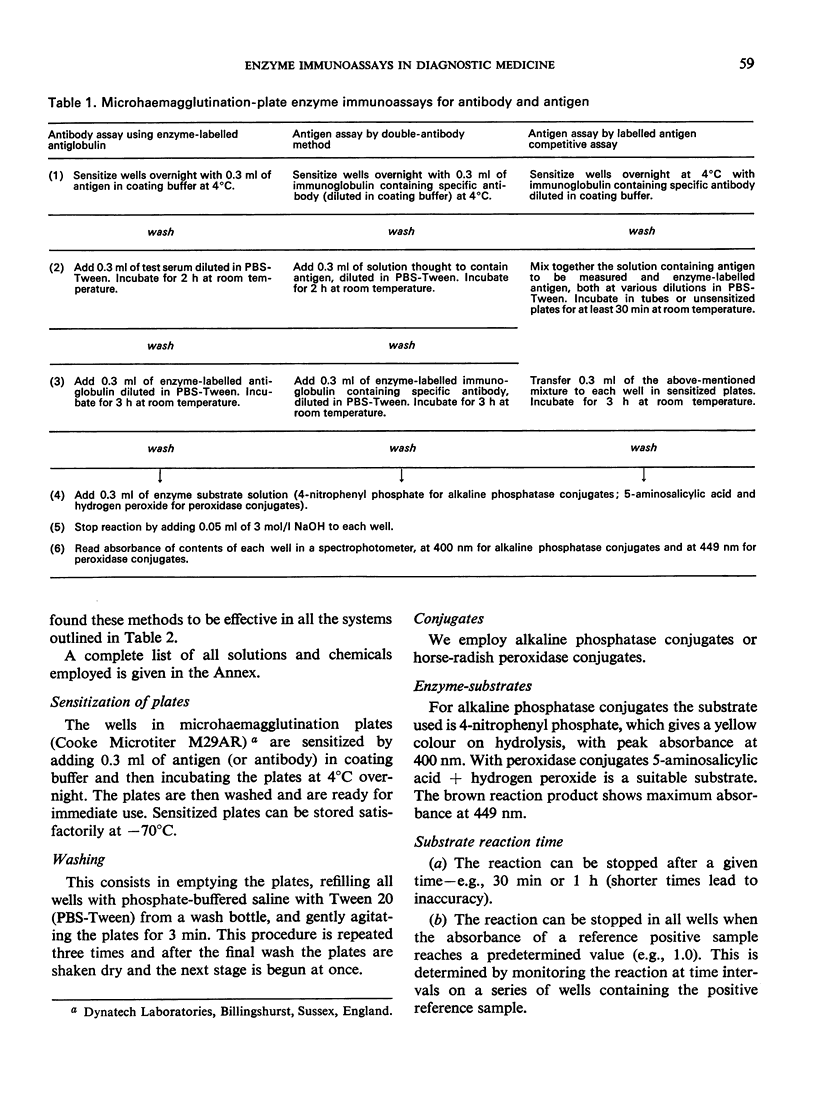
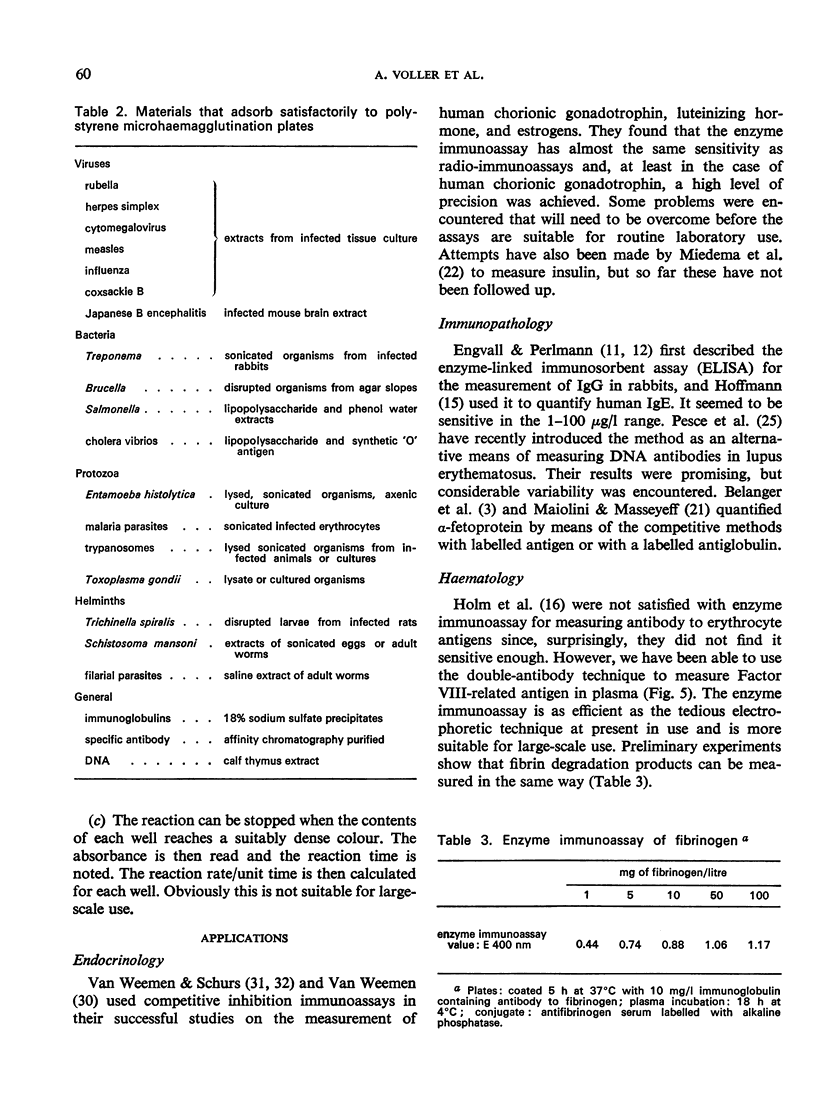
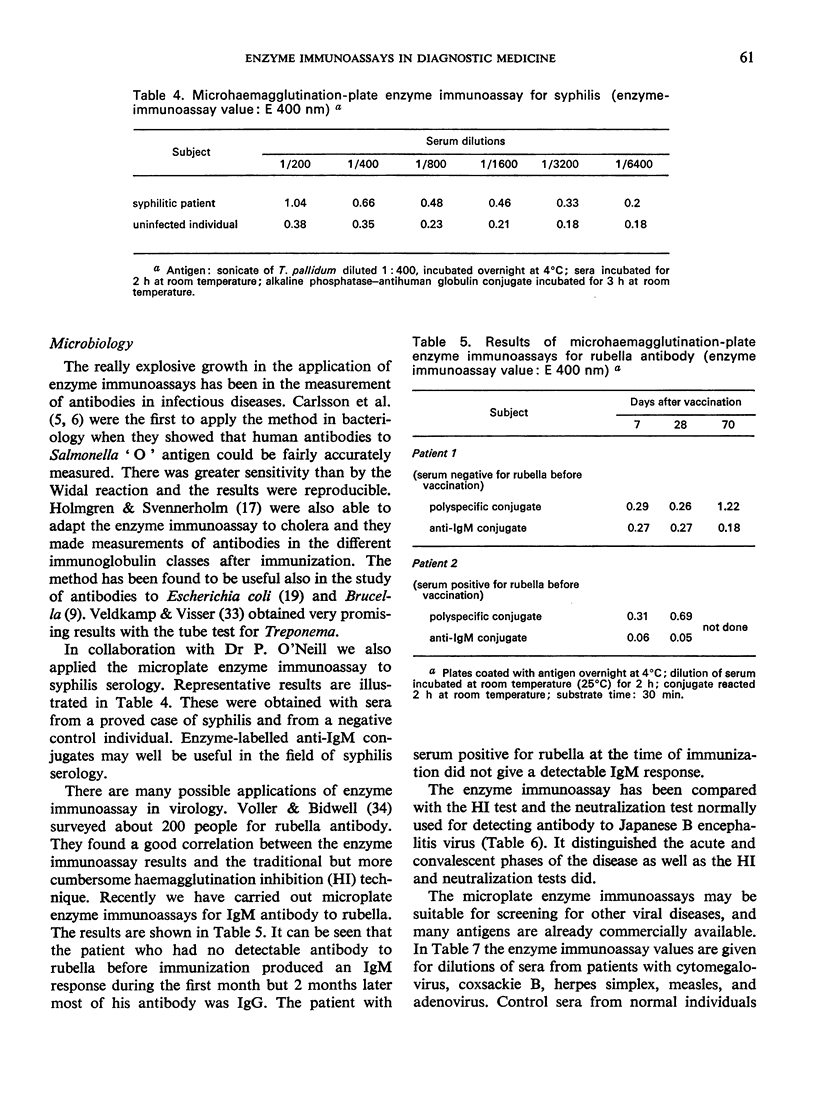
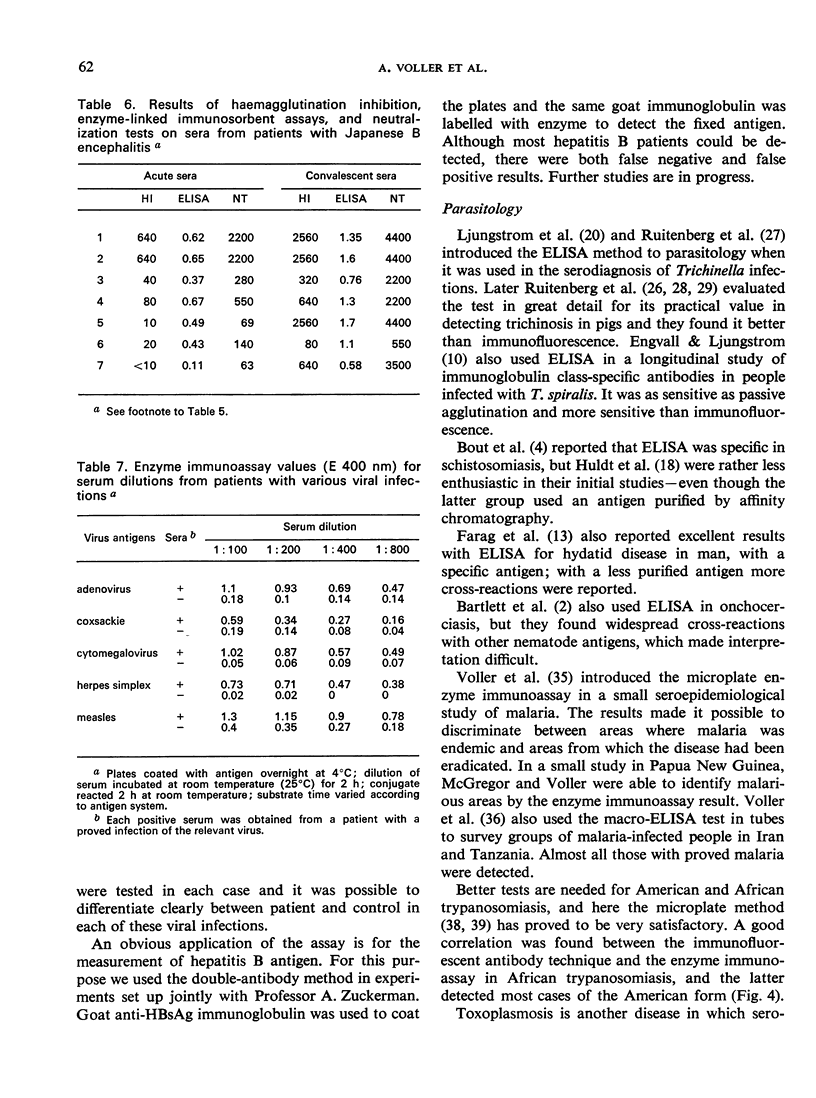
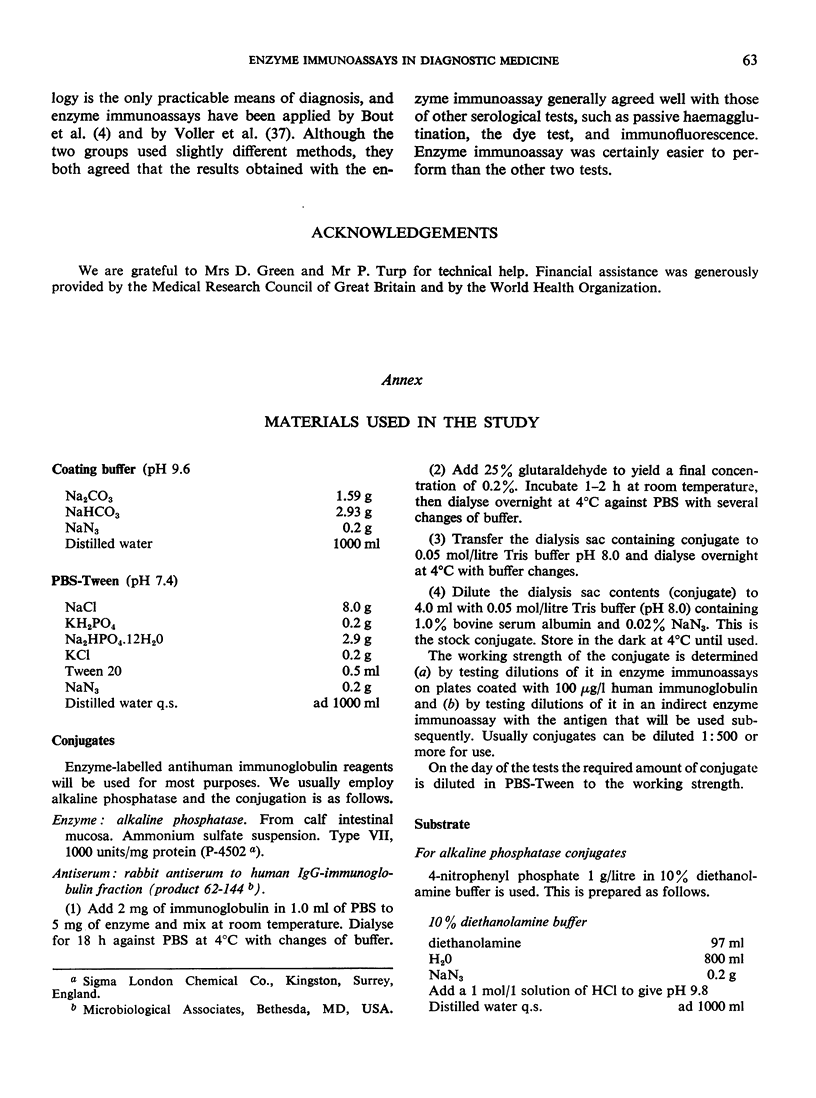
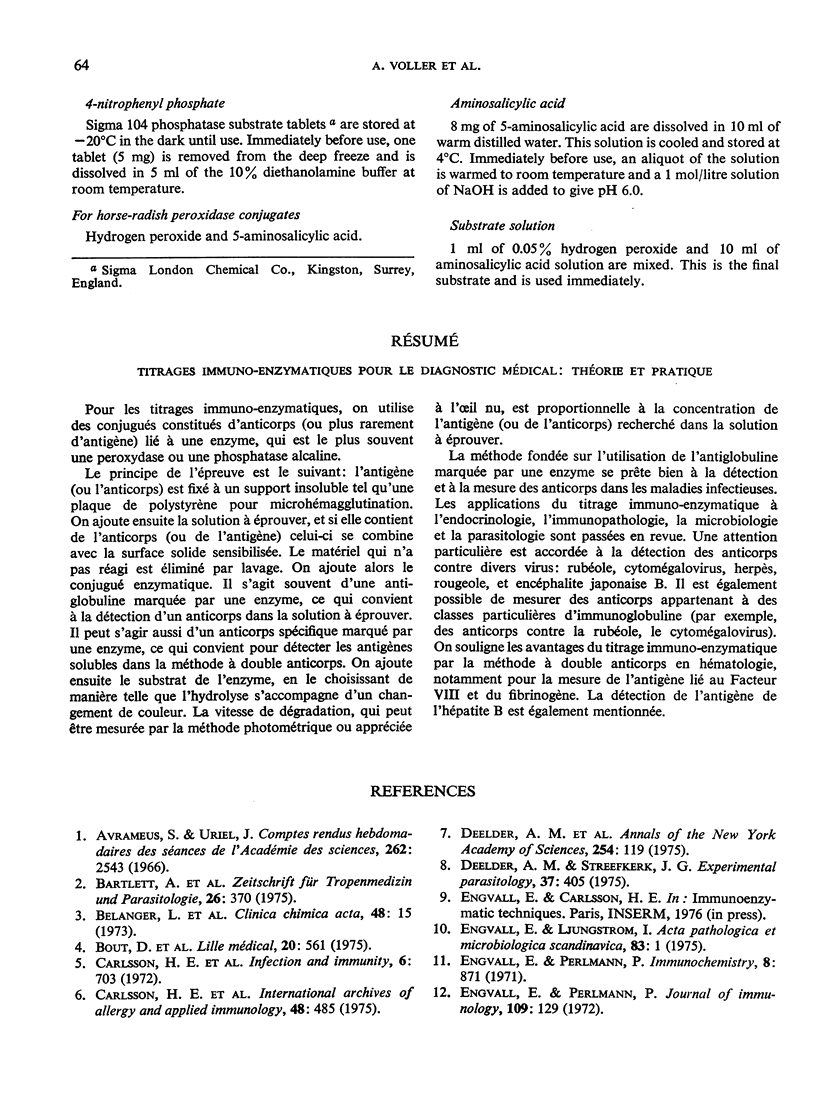
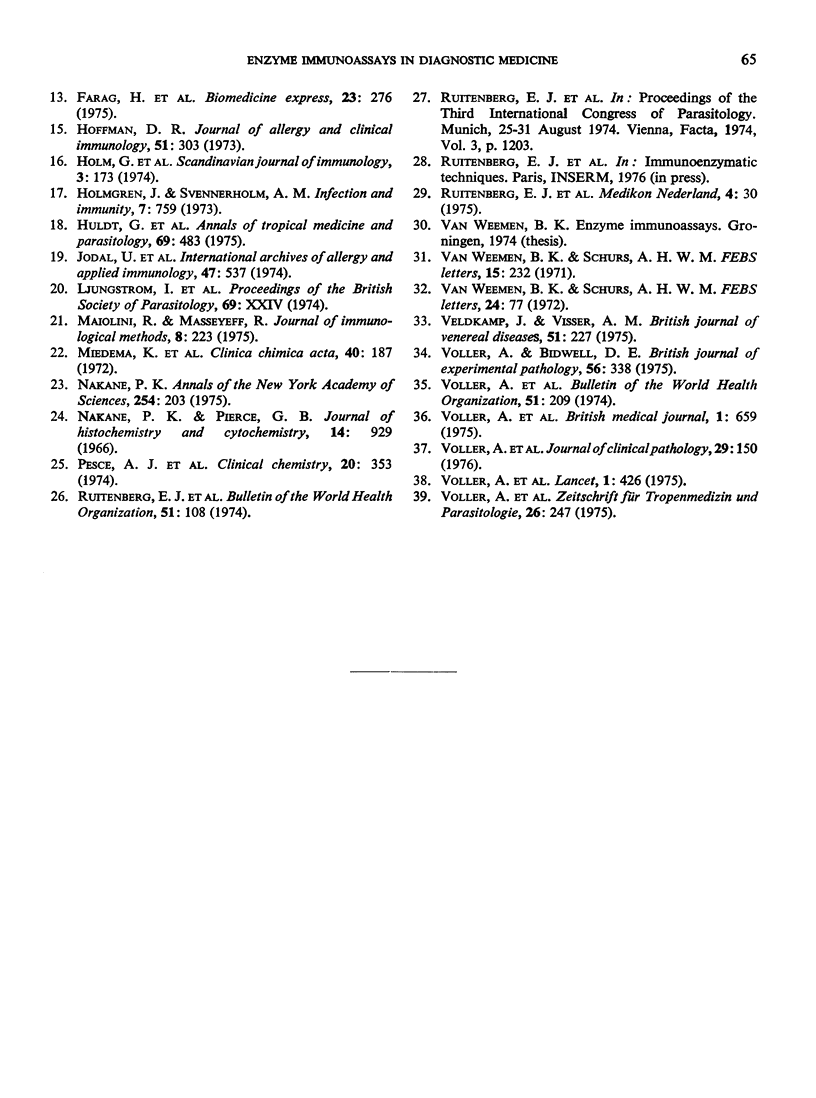
Selected References
These references are in PubMed. This may not be the complete list of references from this article.
- Bout D., Dugimont J. C., Farag H., Capron A. Le diagnostic immunoenzymologique des affections parasitaires. II - Immunoenzymologie quantitative sur lame. Lille Med. 1975 Jun-Jul;20(6):561–566. [PubMed] [Google Scholar]
- Carlsson H. E., Lindberg A. A., Hammarström S. Titration of antibodies to salmonella O antigens by enzyme-linked immunosorbent assay. Infect Immun. 1972 Nov;6(5):703–708. doi: 10.1128/iai.6.5.703-708.1972. [DOI] [PMC free article] [PubMed] [Google Scholar]
- Engvall E., Perlmann P. Enzyme-linked immunosorbent assay (ELISA). Quantitative assay of immunoglobulin G. Immunochemistry. 1971 Sep;8(9):871–874. doi: 10.1016/0019-2791(71)90454-x. [DOI] [PubMed] [Google Scholar]
- Engvall E., Perlmann P. Enzyme-linked immunosorbent assay, Elisa. 3. Quantitation of specific antibodies by enzyme-labeled anti-immunoglobulin in antigen-coated tubes. J Immunol. 1972 Jul;109(1):129–135. [PubMed] [Google Scholar]
- Holmgren J., Svennerholm A. M. Enzyme-linked immunosorbent assays for cholera serology. Infect Immun. 1973 May;7(5):759–763. doi: 10.1128/iai.7.5.759-763.1973. [DOI] [PMC free article] [PubMed] [Google Scholar]
- Maiolini R., Masseyeff R. A sandwich method of enzymoimmunoassay. I. Application to rat and human alpha-fetoprotein. J Immunol Methods. 1975 Sep;8(3):223–234. doi: 10.1016/0022-1759(75)90115-5. [DOI] [PubMed] [Google Scholar]
- Nakane P K, Pierce G B., Jr Enzyme-labeled antibodies: preparation and application for the localization of antigens. J Histochem Cytochem. 1966 Dec;14(12):929–931. doi: 10.1177/14.12.929. [DOI] [PubMed] [Google Scholar]
- Van Weemen B. K., Schuurs A. H.W.M. Immunoassay using antigen-enzyme conjugates. FEBS Lett. 1971 Jun 24;15(3):232–236. doi: 10.1016/0014-5793(71)80319-8. [DOI] [PubMed] [Google Scholar]
- Veldkamp J., Visser A. M. Application of the enzyme-linked immunosorbent assay (ELISA) in the serodiagnosis of syphilis. Br J Vener Dis. 1975 Aug;51(4):227–231. doi: 10.1136/sti.51.4.227. [DOI] [PMC free article] [PubMed] [Google Scholar]
- Voller A., Bidwell D. E. A simple method for detecting antibodies to rubella. Br J Exp Pathol. 1975 Aug;56(4):338–339. [PMC free article] [PubMed] [Google Scholar]


